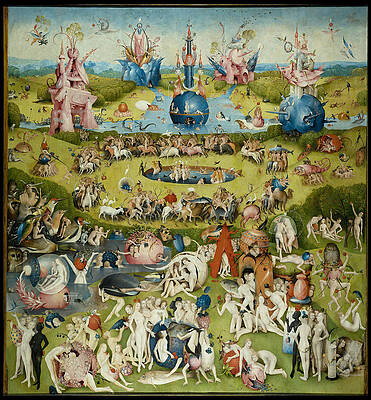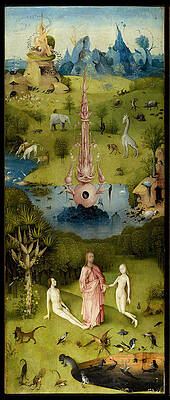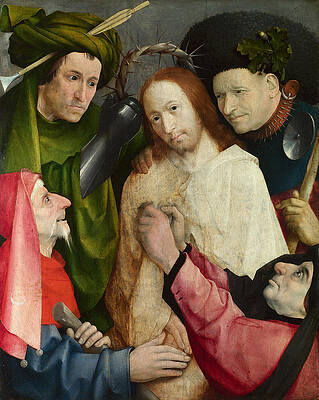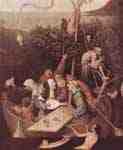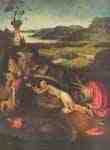Hieronymus Bosch
Paintings
The Garden of Earthly Delights. Right Panel
The Garden of Earthly Delights
The Garden of Earthly Delights. Central Panel
The Garden of Earthly Delights. Left Panel
Hell
The Seven Deadly Sins
The Temptation of Saint Anthony
The Adoration of the Magi
The Haywain Triptych
The Pedlar
Ascent of the Blessed
Ecce Homo
Christ Crowned with Thorns
Saint Christopher
The Adoration of The Magi
Saint John the Baptist in the Desert
Terrestrial Paradise
A Vision of Hell possibly the Vision of TundaleDeath and the Miser


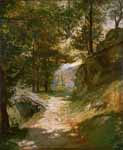

Anthony altar : Arrest of Christ

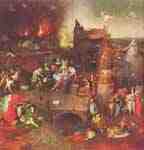
Anthony Altar: Temptations of Saint Anthony , detail
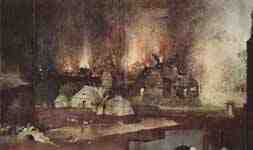
Anthony Altar: Temptations of Saint Anthony , detail

Anthony Altar: Temptations of Saint Anthony , detail

Anthony Altar: Temptations of Saint Anthony , detail
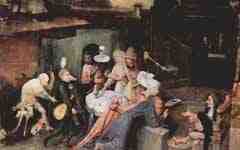
Anthony Altar: Temptations of Saint Anthony , detail
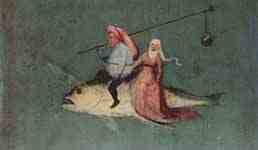
Anthony Altar: Temptations of Saint Anthony , detail
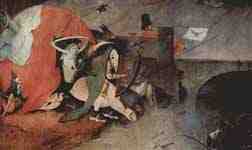
Anthony Altar: Temptations of Saint Anthony , detail
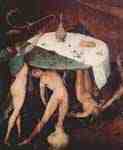
Anthony Altar: Temptations of Saint Anthony , detail
 The Garden of Earthly Delights : The Creation
The Garden of Earthly Delights : The Creation
 The Garden of Earthly Delights
The Garden of Earthly Delights
 The Garden of Earthly Delights : Hell
The Garden of Earthly Delights : Hell
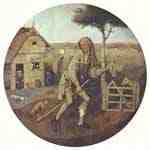



The healing from the madness ( The Stone Operation )
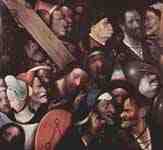

Christ Carrying the Cross ( Christ on Calvary )

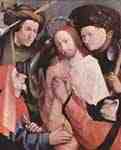

Epiphany - triptych outer sides of the wings

Epiphany Triptych: St Peter and Donors

Epiphany Triptych: St Peter and founder , detail

Epiphany Triptych: Adoration of the Magi

Epiphany Triptych: St. Agnes and founder

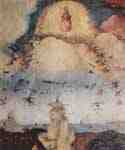

Hayrides , middle panel: The Hay Wain

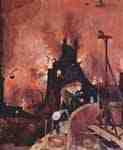
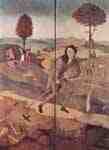
Hayrides : The Pilgrimage of Life

Hayrides : The pilgrimage of life , detail


St. John the Evangelist on Patmos
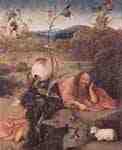
Meditating St. John the Baptist

Table with scenes of the seven deadly sins


Judgement triptych : St. James of Compostela


St. John the Evangelist on Patmos


The Extraction of the Stone of Madness



Drawings
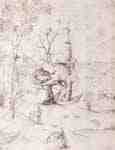

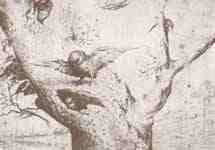
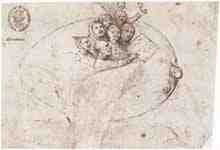
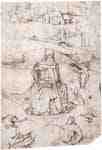
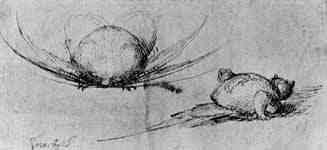
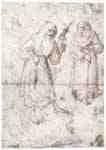
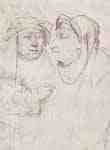
Fine Art Prints | Greeting Cards | iPhone Cases | Tote Bags | Clothing | Lifestyle | Beach ...
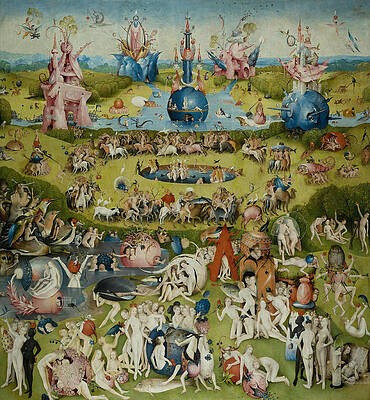
The Garden of Earthly DelightsHieronymus Bosch (/ˌhaɪ.əˈrɒnᵻməs ˈbɒʃ/;[1] Dutch: [ɦijeːˈroːnimɵz ˈbɔs];[2] born Jheronimus van Aken[3] [jeːˈroːnimɵs fɑn ˈaːkə(n)];[4] c. 1450 – 9 August 1516) was an Early Netherlandish painter. His work is known for its fantastic imagery, detailed landscapes, and illustrations of religious concepts and narratives.[5] Within his lifetime his work was collected in the Netherlands, Austria, and Spain, and widely copied, especially his macabre and nightmarish depictions of hell.
Little is known of Bosch's life, though there are some records. He spent most of it in the town of 's-Hertogenbosch, where he was born in his grandfather's house. The roots of his forefathers are in Aachen, in present-day Germany. His pessimistic and fantastical style cast a wide influence on northern art of the 16th century, with Pieter Bruegel the Elder being his best known follower. His paintings have been difficult to translate from a modern point of view; attempts to associate instances of modern sexual imagery with fringe sects or the occult have largely failed. Today he is seen as a hugely individualistic painter with deep insight into humanity's desires and deepest fears. Attribution has been especially difficult; today only about 25 paintings are confidently given to his hand[6] along with 8 drawings. Approximately another half dozen paintings are confidently attributed to his workshop. His most acclaimed works consist of a few triptych altarpieces, the most outstanding of which is The Garden of Earthly Delights.
Life
Hieronymus Bosch was born Jheronimus (or Joen,[7] respectively the Latin and Middle Dutch form of the name "Jerome") van Aken (meaning "from Aachen"). He signed a number of his paintings as Jheronimus Bosch.[8] The name derives from his birthplace, 's-Hertogenbosch, which is commonly called "Den Bosch" ('the forest').
Little is known of Bosch's life or training. He left behind no letters or diaries, and what has been identified has been taken from brief references to him in the municipal records of 's-Hertogenbosch, and in the account books of the local order of the Illustrious Brotherhood of Our Blessed Lady. Nothing is known of his personality or his thoughts on the meaning of his art. Bosch's date of birth has not been determined with certainty. It is estimated at c. 1450 on the basis of a hand drawn portrait (which may be a self-portrait) made shortly before his death in 1516. The drawing shows the artist at an advanced age, probably in his late sixties.[9]
Bosch was born and lived all his life in and near 's-Hertogenbosch, a city in the Duchy of Brabant. His grandfather, Jan van Aken (died 1454), was a painter and is first mentioned in the records in 1430. It is known that Jan had five sons, four of whom were also painters. Bosch's father, Anthonius van Aken (died c. 1478), acted as artistic adviser to the Illustrious Brotherhood of Our Blessed Lady.[10] It is generally assumed that either Bosch's father or one of his uncles taught the artist to paint, but none of their works survive.[11] Bosch first appears in the municipal record on 5 April 1474, when he is named along with two brothers and a sister.
The Crucifixion of St Julia is attributed to Bosch's Middle period, c 1497
's-Hertogenbosch was a flourishing city in 15th-century Brabant, in the south of the present-day Netherlands, at the time part of the Burgundian Netherlands, and during its lifetime passing through marriage to the Habsburgs. In 1463, 4,000 houses in the town were destroyed by a catastrophic fire, which the then (approximately) 13-year-old Bosch presumably witnessed. He became a popular painter in his lifetime and often received commissions from abroad. In 1488 he joined the highly respected Brotherhood of Our Lady, an arch-conservative religious group of some 40 influential citizens of 's-Hertogenbosch, and 7,000 'outer-members' from around Europe.
Sometime between 1479 and 1481, Bosch married Aleyt Goyaerts van den Meerveen, who was a few years his senior. The couple moved to the nearby town of Oirschot, where his wife had inherited a house and land from her wealthy family.[12] An entry in the accounts of the Brotherhood of Our Lady records Bosch's death in 1516. A funeral mass served in his memory was held in the church of Saint John on 9 August of that year.[13]
Works
Main article: List of paintings by Hieronymus Bosch
The Garden of Earthly Delights in the Museo del Prado in Madrid, c. 1495–1505, attributed to Bosch.
Bosch produced at least sixteen triptychs, of which eight are fully intact, and another five in fragments.[14] Bosch's works are generally organized into three periods of his life dealing with the early works (c. 1470–1485), the middle period (c.1485–1500), and the late period (c. 1500 until his death). According to Stefan Fischer, thirteen of Bosch's surviving paintings were completed in the late period, with seven surviving paintings attributed to his middle period.[15] Bosch's early period is studied in terms of his workshop activity and possibly some of his drawings. The recent dendrochronological investigation of the oak panels by the scientists at the Bosch Research and Conservation Project[16] led to a more precise dating of the majority of Bosch's paintings.[17]
His most famous triptych is the The Garden of Earthly Delights (c. 1495–1505) whose outer panels are intended to bracket the main central panel between the Garden of Eden depicted on the left panel and the Last Judgment depicted on the right panel. It is attributed by Fischer as a transition painting rendered by Bosch from between his middle period and his late period. In the left hand panel God presents Eve to Adam; innovatively God is given a youthful appearance. The figures are set in a landscape populated by exotic animals and unusual semi-organic hut-shaped forms. The central panel is a broad panorama teeming with socially engaged nude figures seemingly engaged in innocent, self-absorbed joy, as well as fantastical animals, oversized fruit and hybrid stone formations.[18]
The right panel presents a hellscape; a world in which humankind has succumbed to the temptations of evil and is reaping eternal damnation. Set at night, the panel features cold colours, tortured figures and frozen waterways. The nakedness of the human figures has lost any eroticism suggested in the central panel,[19] as large explosions in the background throw light through the city gate and spill onto the water in the panel's midground.[20]
Bosch sometimes painted in a comparatively sketchy manner, contrasting with the traditional Flemish style of painting in which the smooth surface—achieved by the application of multiple transparent glazes—conceals the brushwork.
The Last Judgment, c. 1500–05.
Bosch's paintings with their rough surfaces, so called impasto painting, differed from the tradition of the great Netherlandish painters of the end of the 15th, and beginning of the 16th centuries, who wished to hide the work done and so suggest their paintings as more nearly divine creations.[21]
Bosch did not date his paintings, but—unusual for the time—he seems to have signed several of them, although some signatures purporting to be his are certainly not. About 25 paintings remain today that can be attributed to him. In the late sixteenth century, Philip II of Spain acquired many of Bosch's paintings, including some probably commissioned and collected by Spaniards active in Bosch's hometown; as a result, the Prado Museum in Madrid now owns The Adoration of the Magi, The Garden of Earthly Delights, the tabletop painting of The Seven Deadly Sins and the Four Last Things, The Haywain Triptych and The Stone Operation.
The Hay Wain About 1516
Reconstruction of the left inner wing of a lost triprych by Jheronimus Bosch, consisting of the Ship of Fools (top) and the Allegory of Gluttony and Lust (bottom).
The Seven Deadly Sins and the Four Last Things
The right inner wing of a lost triprych by Jheronimus Bosch, consisting of Death and the Miser.
Painting materials
Hieronymus Bosch painted his works mostly on oak panels using oil as a medium. Bosch's palette was rather limited and contained the usual pigments of his time.[22] He predominantly employed azurite for blue skies and distant landscapes, green copper based glazes and paints consisting of malachite or verdigris for foliage and foreground landscapes and lead-tin-yellow, ochres and red lake (carmine or madder lake) for his figures.[23]
Interpretation
Main article: Hieronymus Bosch drawings
The Owl's Nest. Pen and bistre on paper. 140 × 196 mm. Rotterdam, Museum Boijmans Van Beuningen
In the 20th century, when changing artistic tastes made artists like Bosch more palatable to the European imagination, it was sometimes argued that Bosch's art was inspired by heretical points of view (e.g., the ideas of the Cathars and putative Adamites) as well as by obscure hermetic practices. Again, since Erasmus had been educated at one of the houses of the Brethren of the Common Life in 's-Hertogenbosch, and the town was religiously progressive, some writers have found it unsurprising that strong parallels exist between the caustic writing of Erasmus and the often bold painting of Bosch. "Although the Brethren remained loyal to the Pope, they still saw it as their duty to denounce the abuses and scandalous behavior of many priests: the corruption which both Erasmus and Bosch satirised in their work".[24]
Hell panel from The Garden of Earthly Delights. It is alleged that Bosch self portait is in the upper center at right under the "table".
Others, following a strain of Bosch-interpretation datable already to the 16th century, continued to think his work was created merely to titillate and amuse, much like the "grotteschi" of the Italian Renaissance. While the art of the older masters was based in the physical world of everyday experience, Bosch confronts his viewer with, in the words of the art historian Walter Gibson, "a world of dreams [and] nightmares in which forms seem to flicker and change before our eyes". In one of the first known accounts of Bosch's paintings, in 1560 the Spaniard Felipe de Guevara wrote that Bosch was regarded merely as "the inventor of monsters and chimeras". In the early seventeenth century, the artist-biographer Karel van Mander described Bosch's work as comprising "wondrous and strange fantasies"; however, he concluded that the paintings are "often less pleasant than gruesome to look at".[25]
In recent decades, scholars have come to view Bosch's vision as less fantastic, and accepted that his art reflects the orthodox religious belief systems of his age.[26] His depictions of sinful humanity and his conceptions of Heaven and Hell are now seen as consistent with those of late medieval didactic literature and sermons. Most writers attach a more profound significance to his paintings than had previously been supposed, and attempt to interpret it in terms of a late medieval morality. It is generally accepted that Bosch's art was created to teach specific moral and spiritual truths in the manner of other Northern Renaissance figures, such as the poet Robert Henryson, and that the images rendered have precise and premeditated significance. According to Dirk Bax, Bosch's paintings often represent visual translations of verbal metaphors and puns drawn from both biblical and folkloric sources.[27] However, the conflict of interpretations that his works still elicit raises profound questions about the nature of "ambiguity" in art of his period.
Latterly art historians have added a further dimension to the subject of ambiguity in Bosch's work, emphasizing ironic tendencies, for example in The Garden of Earthly Delights, both in the central panel (delights),[28] and the right panel (hell).[29] They theorize that the irony offers the option of detachment, both from the real world and from the painted fantasy world, thus appealing to both conservative and progressive viewers.
A 2012 study[30] on Bosch's paintings alleges that they actually conceal a strong nationalist consciousness, censuring the foreign imperial government of the Burgundian Netherlands, especially Maximilian Habsburg. By systematically superimposing images and concepts, the study asserts that Bosch also made his expiatory self-punishment, for he was accepting well-paid commissions from the Habsburgs and their deputies, and therefore betraying the memory of Charles the Bold.[31]
Debates on attribution
Christ Before Pilate, ca. 1520, one of the paintings with disputed attribution, in the Princeton University Art Museum which would date from Bosch's Late period of painting.
The exact number of Bosch's surviving works has been a subject of considerable debate. His signature can be seen on only seven of his surviving paintings, and there is uncertainty whether all the paintings once ascribed to him were actually from his hand. It is known that from the early 16th century onwards numerous copies and variations of his paintings began to circulate. In addition, his style was highly influential, and was widely imitated by his numerous followers.[32]
Over the years, scholars have attributed to him fewer and fewer of the works once thought to be his. This is partly a result of technological advances such as infrared reflectography, which enable researchers to examine a painting's underdrawing.[33] Art historians of the early- and mid-20th century, such as Tolnay[34] and Baldass,[35] identified between 30 and 50 paintings that they believed to be by Bosch's hand,[36] while a later monograph by Gerd Unverfehrt (1980) attributed only 25 paintings and 14 drawings to him.[36] In early 2016, The Temptation of St. Anthony, a small panel in the Nelson-Atkins Museum of Art in Kansas City, Missouri, long attributed to the workshop of Hieronymus Bosch, was credited to the painter himself after intensive forensic study by the Bosch Research and Conservation Project.[6][37][38] The BRCP has also questioned whether two well-known paintings traditionally accepted to be by Bosch, The Seven Deadly Sins in the Prado and Christ Carrying the Cross in the Museum of Fine Arts, Ghent, should instead be credited to the artist's workshop rather than to the painter's own hand.[39]
See also
Hieronymus Bosch—Visions of Genius (exhibition)
Footnotes
"Bosch". Random House Webster's Unabridged Dictionary.
In isolation, Hieronymus is pronounced [ɦijeːˈroːnimɵs].
Dijck (2000): pp. 43–44. His birth is undocumented. However, the Dutch historian G.C.M. van Dijck points out that the vast majority of contemporary archival entries state his name as being Jheronimus van Aken. Variants on his name are Jeronimus van Aken (Dijck (2000): pp. 173, 186), Jheronimus anthonissen van aken (Marijnissen ([1987]): p. 12), Jeronimus Van aeken (Marijnissen ([1987]): p. 13), Joen (Dijck (2000): pp. 170–171, 174–177), and Jeroen (Dijck (2000): pp. 170, 174).
In isolation, van is pronounced [vɑn].
Catherine B. Scallen, The Art of the Northern Renaissance (Chantilly: The Teaching Company, 2007) Lecture 26
Siegal, Nina (February 1, 2016). "Hieronymus Bosch Credited With Work in Kansas City Museum". The New York Times. Retrieved February 1, 2016.
Dijck (2000): pp. 43–44. A variant on his Middle Dutch name is "Jeroen". Van Dijck points out that in all contemporary sources the name "Jeroen" is used twice, while the name "Joen" is used nine times, making "Joen" to be his probable Christian name.
Signed works by Bosch include The Adoration of the Magi, Saint Christopher Carrying the Christ Child, St. John the Evangelist on Patmos, The Temptation of Saint Anthony, The Hermit Saints Triptych, and The Crucifixion of St Julia.
Gibson, 15–16
Gibson, 15, 17
Gibson, 19
Valery, Paul. "The Phase of Doubt, A Critical Reflection".
Gibson, 18
Jacobs, 1010
Stefan Fischer. Bosch: The Complete Works.
Bosch Research and Conservation Project, 2016
Luuk Hoogstede, Ron Spronk, Matthijs Ilsink, Robert G. Erdmann, Jos Koldeweij, Rik Klein Gotink, Hieronymus Bosch, Painter and Draughtsman: Technical Studies, Yale University Press, 2016
Fraenger, 10
Belting, 38
Gibson, 92
'Bosch and the Delights of Hell' Archived 27 May 2014 at the Wayback Machine.
Hoogstede et al. (2016)
Hieronymus Bosch: General Resources, ColourLex
The Secret Life of Paintings. Richard Foster & Pamela Tudor-Craig ISBN 0-85115-439-5
Gibson, 9
Bosing, Walter (1987). Hieronymus Bosch. Taschen.
Bax, 1949.
Pokorny (2010), 23, 25, 31.
Boulboullé (2008), 68, 70–72, 75–76.
Oliveira, Paulo Martins, Jheronimus Bosch, 2012, pp.27, 199–218. ISBN 978-1-4791-6765-4.
Oliveira, Paulo Martins, Bosch, the surdo canis, 2013 (on-line paper).
Gibson, 163
Finaldi, Gabriele/ Garrido, Carmen "El trazo oculto. Dibujos subyacentes en pinturas de los siglos XV y XVI" (Museo Nacional del Prado, Madrid 2006)
Tolnay, Charles de "Hieronymus Bosch" (Methuen & Co, London 1966)
Baldass, Ludwig v. "Hieronimus Bosch" ( Harry N. Abrams, New York, 1960)
Muller, Sheila D. (1997). Dutch Art: an Encyclopedia. New York: Garland Pub. p. 47. ISBN 0-8153-0065-4.
Russell, Anna (February 1, 2016). "Kansas City Museum Painting Deemed an Authentic Bosch". The Wall Street Journal. Retrieved February 1, 2016.
Hoedel, Cindy (February 1, 2016). "Rare Painting by Dutch Master Hieronymous Bosch Has Been in Storage at Nelson-Atkins". The Kansas City Star. Retrieved February 1, 2016.
Neuendorf, Henri (November 2, 2015). "Scientists Question Attribution of Two Hieronymus Bosch Masterpieces". Artnet. Retrieved February 1, 2016.
References
Strickland, D. H., The Epiphany of Hieronymys Bosch. Imagining Antichrist and Others from the Middle Ages to the Reformation (Studies in Medieval and Early Renaissance Art History), Turnhout: Harvey Miller, 2016, ISBN 978-1-909400-55-9
Bax, Dirk. Ontcijfering van Jeroen Bosch. Den Haag, 1949
Boulboullé, Guido. "Groteske Angst. Die Höllenphantasien des Hieronymus Bosch". In: Auffarth, Christoph, and Kerth, Sonja (Eds): "Glaubensstreit und Gelächter: Reformation und Lachkultur im Mittelalter und in der Frühen Neuzeit", LIT Verlag Berlin, 2008. 55–78.
Fischer, Stefan. "Hieronymus Bosch. The Complete Works", Cologne 2013.
Fraenger, Wilhelm "Hieronymus Bosch" (Verlag der Kunst, Dresden 1975)
"Le royeaume millénaire de Jérome Bosch" (French transl. by Roger Lewinter, Paris 1993)
Gibson, Walter. Hieronymus Bosch. New York: Thames and Hudson, 1973. ISBN 0-500-20134-X
Jacobs, Lynn. "The Triptychs of Hieronymus Bosch". The Sixteenth Century Journal, Volume 31, No. 4, 2000. 1009–1041
Koldeweij, Jos & Vermet, Bernard & van Kooij, Barbera. Hieronymus Bosch. New Insights Into His Life and Work, NAi Publishers, Rotterdam 2001. ISBN 90-5662-214-5
Marijnissen, Roger. "Hiëronymus Bosch. Het volledige oeuvre". Haarlem: Gottmer/Brecht, 1987. ISBN 90-230-0651-8
Panofsky, Erwin. "Hieronymus Bosch und das Paradies der Wollust". In: "Frühneuzeit-Info", Jg. 21, Heft 1+2 (Sonderband: Die Sieben Todsünden in der Frühen Neuzeit"), 2010. 22–34.
van Dijck, G.C.M. "Op zoek naar Jheronimus van Aken alias Bosch. De feiten. Familie, vrienden en opdrachtgevers". Zaltbommel: Europese Bibliotheek, 2001. ISBN 90-288-2687-4
Further reading
O'Neill, John P., ed. (1987). The Renaissance in the North. New York: The Metropolitan Museum of Art. ISBN 978-0-87099-434-0.
Ilsink, Matthijs; Koldeweij, Jos (2016). Hieronymus Bosch: Painter and Draughtsman – Catalogue raisonné. Yale University Press. p. 504. ISBN 978-0-300-22014-8.
External links
Jheronimus Bosch Art Center
Hieronymus Bosch at Ibiblio
Hieronymus Bosch—The complete works, 188 works by Bosch
Bosch Research and Conservation Project (BRCP)
Hieronymus Bosch, General Resources, ColourLex
Artist
A - B - C - D - E - F - G - H - I - J - K - L - M -
N - O - P - Q - R - S - T - U - V - W - X - Y - Z
Retrieved from "http://en.wikipedia.org/"
All text is available under the terms of the GNU Free Documentation License



